"Usa Yujo Map" PDF download (3434KB) |
Information on past events is also posted.
Innai Tidbits
The southern end of the Innai area borders Kusu Town, and on the Kusu Town side there is Nishi-Shiiya Falls, whose water source is Hinasedai. In the adjacent Nishi-Shiya district of our area, the water becomes the Era River and flows north, and in the Mimata district in the south near the Usa area, it joins the Tsubo River that flows out of the Ajimu Basin to become the Ekidate River. Additionally, as the Era River flows north through the eastern part of the Innai area, many rivers flowing from the western hills join together, and each basin is a valley-bottom plain with developed river terraces.
The representative cultural property of Innai is the three carved wooden Buddhas of Ryugan-ji Temple, which are characterized by the style of the Heian period, and are designated as important cultural properties of the country along with the hall of worship. There is a theory that this temple was one of the 49 temples built by Gyoki Bodhisattva, so the name Innai originated, but it is also possible that it is related to Ajimu Temple, which is named after the place named Kurain.
In addition, Myokendake Castle overlooking the Usa Plain was the base of the Ouchi clan, the guardian of Buzen, during the Muromachi period, but from 1556 it came under the control of the Otomo clan and became the key castle for Buzen rule. The remains of structures such as a vertical moat and earthworks are well preserved at the summit.
This area has deep rivers and valleys, so villages are scattered and isolated. Stone arch bridges were built to connect villages, and there are currently 75 of them in existence, the highest concentration in Japan.
The representative cultural property of Innai is the three carved wooden Buddhas of Ryugan-ji Temple, which are characterized by the style of the Heian period, and are designated as important cultural properties of the country along with the hall of worship. There is a theory that this temple was one of the 49 temples built by Gyoki Bodhisattva, so the name Innai originated, but it is also possible that it is related to Ajimu Temple, which is named after the place named Kurain.
In addition, Myokendake Castle overlooking the Usa Plain was the base of the Ouchi clan, the guardian of Buzen, during the Muromachi period, but from 1556 it came under the control of the Otomo clan and became the key castle for Buzen rule. The remains of structures such as a vertical moat and earthworks are well preserved at the summit.
This area has deep rivers and valleys, so villages are scattered and isolated. Stone arch bridges were built to connect villages, and there are currently 75 of them in existence, the highest concentration in Japan.
In recent years, the conical mountain towering over Nishi-Shiiya Village has become a hot topic of conversation as the "Machu Picchu of Usa" because it resembles Huayna Picchu, the highest peak of Machu Picchu, a world heritage site. In addition, the Yabakei welded tuff caused by a volcanic eruption about 400,000 years ago solidified and eroded with the same quality and hardness, resulting in the creation of the Takkiri Valley, a monolithic, flat river bed that stretches for 2 km.
National Route 387 runs along the Era River. As you travel over a difference in elevation of about 500m, you can enjoy the landscape with its varied elevations, including the Ryogo Rice Terraces, selected as one of Japan's top one hundred rice terraces, and the stone bridges reminiscent of stone art. Yuzu and loach are shipped all over the country as specialty products.
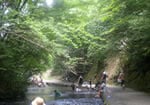
Takkiri Valley
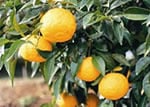
Yuzu
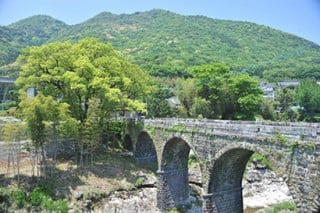
Torii Bridge
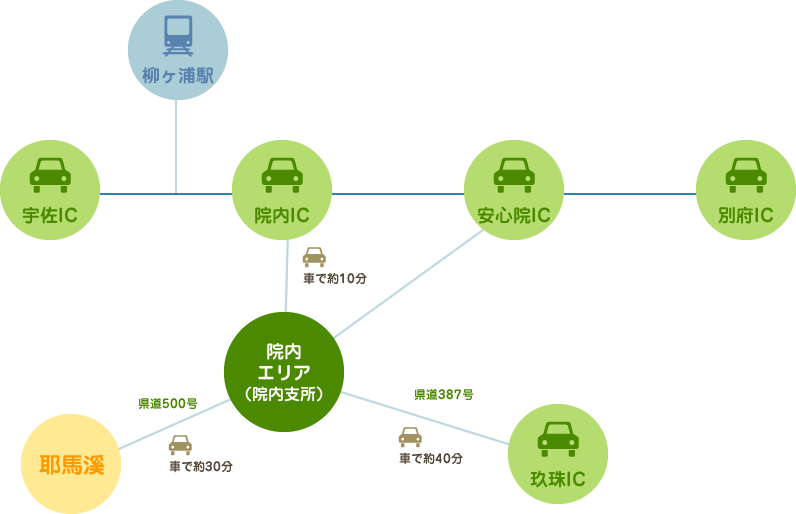
Recommended Spots
When you think of Innai, you think of Ishibashi. In particular, there are observatories at Torii Bridge, Arase Bridge, Okutsu Bridge, Bunji Bridge, and Fujimi Bridge, which span National Route 387. The giant salamander of the Yoso River has been designated as a special monument of the country, and is famous for being the only one in Kyushu and having the southernmost habitat. It is specially open to the public at Michi-no-Eki Innai and Yo Onsen. Built in the shade of a rock in the Daimon district, the Ryūgan-ji Okunoin Reido Hall houses the approximately 3m-long Buddha statues of Yakushi, Amida, and Fudo Myoo, and is designated as a national important cultural property along with the Reido Hall as a Heian-style Buddhist statue. Many tourists visit Takkiri Valley to cool off in the summer, but it is also a popular spot during the season of fresh green leaves and autumn leaves. Mt. Kanarase, which has an altitude of 768m and is located on the border with Honyabakei-cho, Nakatsu City, is popular with people climbing to admire rhododendrons. Enma Cave, which was dug within the grounds of Fukugonji Temple, is designated as a historic site by the city. Hemi Garden is a Japanese garden built by an individual, but it is also open to tourists. Higaku Kagura and Tokehira Kagura are famous traditional performing arts.
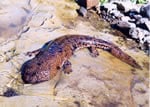
Giant salamander
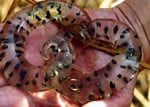
giant salamander eggs
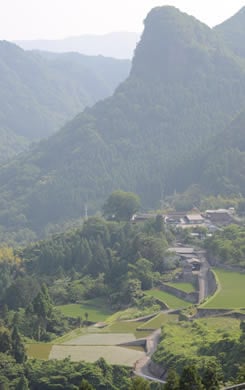
machu picchu in Usa
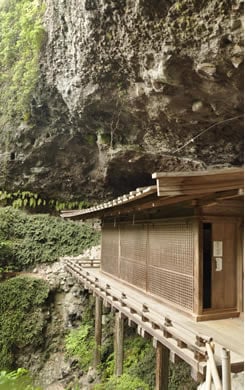
Ryuganji Temple
Tourism Initiatives
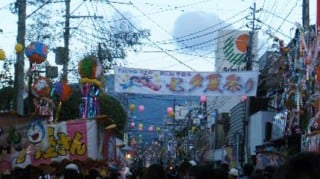
Outdoor music event "Jamaica Village"
As National Route 387 has become easier to use due to improvement work, the number of customers from the Fukuoka and Kumamoto areas who come to Usa City from the Kusu Interchange on the Oita Expressway is increasing. In addition to traveling from this area to the Usa/Ajimu area, you can now enjoy wide-area sightseeing, including Yabakei, using National Route 500 and Prefectural Route 44. In addition to the horizontal collaboration between the three locations of Yufuin, Ajimu, and Innai, the vertical collaboration of the mountains, countryside, and sea using National Route 387, which runs along the Era River and the Ekidate River, will make it possible to scale up Usa tourism.
If tourism within Innai is called "river tourism" due to being blessed with the nature and history of the river, such as giant salamanders, stone bridges, and rice terraces, then Usa tourism can be integrated with Ajimu's green tourism and the Choshu district's marine tourism to further enhance the appeal of Usa tourism. Also in this area is Heisei no Mori Park, which has a baseball field, track and field stadium, tennis court with a dome, and a sumo ring. In addition to promoting tourism through various sporting events, we also promote tourism through arts and culture that utilize our facilities for multiple purposes, such as the outdoor music event "Jamaica Village" and the "Innai Ishibashi no Sato Concert."
If tourism within Innai is called "river tourism" due to being blessed with the nature and history of the river, such as giant salamanders, stone bridges, and rice terraces, then Usa tourism can be integrated with Ajimu's green tourism and the Choshu district's marine tourism to further enhance the appeal of Usa tourism. Also in this area is Heisei no Mori Park, which has a baseball field, track and field stadium, tennis court with a dome, and a sumo ring. In addition to promoting tourism through various sporting events, we also promote tourism through arts and culture that utilize our facilities for multiple purposes, such as the outdoor music event "Jamaica Village" and the "Innai Ishibashi no Sato Concert."
